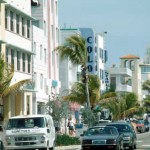The U.S. Hotel Industry Leading indicator, or HIL, went up 1.5 percent during May, the fourth monthly increase after a slight dip in January’s reading, according to economic research firm e-forecasting.com in conjunction with STR.
 HIL is a monthly composite leading indicator that, on average, leads the industry’s business activity four to five months in advance. The latest increase brought the index to a reading of 113.5. The index was set to equal 100 in 2000.
HIL is a monthly composite leading indicator that, on average, leads the industry’s business activity four to five months in advance. The latest increase brought the index to a reading of 113.5. The index was set to equal 100 in 2000.
The index’s six-month growth rate, a signal of turning points, went up by an annual rate of 10 percent during May after increasing 8.8 percent during April. This compares to a long-term annual growth rate of 3.5 percent, the same as the annual growth rate of the country’s overall economic activity. During the deepest point of the recession in January 2009, this growth rate was down to negative 15.7 percent.
Eight of the nine components that make up Hotel Industry Leading indicator had a positive contribution during May: Weekly Hours in Hotels; Hotel Profitability; International Visitors Future Demand; Interest Rate Spread; New Orders for Manufactured Goods; Oil Prices; Housing Activity and National Vacation Barometer. Only one of the nine components had a negative or zero contribution to HIL in May: Labor Market Tightness.
“The combination this month of the positive effects of lower energy prices, an advance in manufacturing activity and increased hours in the hotel industry had a robust effect on the hotel industry leading indicator in May,” said Maria Simos, CEO of e-forecasting.com. “This impact has made a slight turnaround in the slowing of the six-month growth rate and gives us pause to make any definitive comments on an upcoming turning point in the indicator. The next few months will be very important to watch with the leading indicator.”


